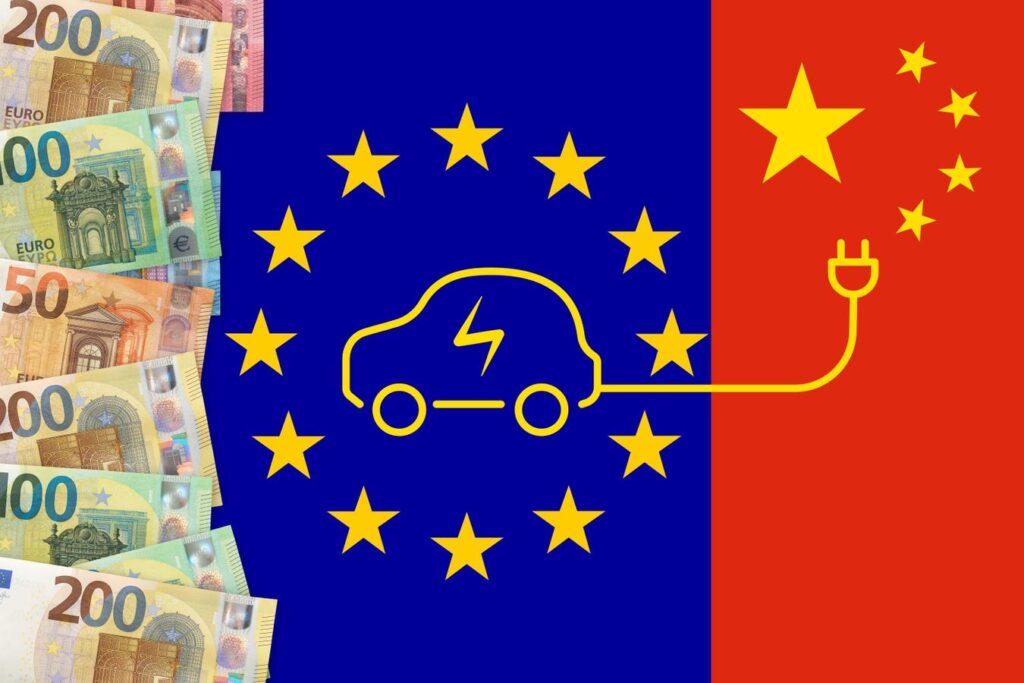China’s electric vehicle juggernaut appeared to be easing in Europe but last month new data showed the lull was short-lived. Momentum has sharply shifted again—this time back in favor of Chinese automakers—leaving the likes of Renault and Stellantis facing renewed pressure.
In the top five European markets of Germany, France, Britain, Spain and Italy, Chinese brands had a market share of 6% in May, including ICE, hybrid, plug-in hybrid and EV, while it has accelerated to 11% just in the EV segment, investment bank UBS said in a report. Both outcomes were more than double the result for May 2024.
JATO Dynamics said Chinese brand sales accelerated in May to 65,800 from 31,200 in same month last year. JATO global analyst Felipe Munoz said EV growth was despite the imposition last October of EU tariffs, which added up to 35% to the price of some vehicles, on top of the regular 10% import charge.
Despite Tariffs
“Despite the EU’s imposition of tariffs on Chinese electric vehicles, its car brands continue to post strong growth across Europe,” Munoz said in a report. “Their momentum is partly due to their decision to push alternative powertrains, such as plug-in hybrids and full hybrids, to the region,” Munoz said.
JATO Dynamics says it is the world’s leading supplier of automotive business intelligence.
UBS said further growth in Europe for Chinese manufacturers is expected because –
- Price competition in China makes more profitable exports attractive.
- The potential replacement of EU tariffs by minimum pricing.
- A broader offering of Chinese brands in the hybrid and ICE market.
A report from Reuters earlier this year showed the extent to which Chinese automakers can raise prices overseas compared with their home markets. The report said China’s top EV maker BYD can charge up to three times more in foreign markets than at home. Reuters reviewed published prices by BYD dealers in Germany, Brazil, Australia and Thailand.
The starting price for the BYD Atto, a compact SUV, ranged from 81% to 174% higher than in China. The Dolphin hatchback ranged from 39% to 178% higher and Seal high-performance sedan prices were from 30% to 134% higher.
EU tariffs could be replaced by “minimum pricing”, an agreement not to sell below a certain level. China has said it will decide whether to accept minimum pricing by July 9.
Existential Threat
Chinese companies’ huge advantage in efficiency and therefore profitability revives the worry that the Chinese onslaught might turn out to be existential for European automakers. It will add fuel to the arguments of those seeking a change in EU rules to allow local manufacturers to exploit their long-term advantage in ICE technology, and give them a chance to make up the EV gap with China.
This could include diluting the 2035 CO2 emissions rules. The EU Commission is meeting later this year to review the 2035 mandate, including the possibility of “full technology neutrality”.
The renewed Chinese action has now moved down market to the entry-level city car market where Europeans have struggled most to combat China’s ability to produce truly affordable cars.
The recent launch of the BYD Surf will have rung more alarm bells. This little town car is a version of the BYD Seagull which sells for less than $10,000 in China. The version on sale in Europe has been modified at some expense, but its price of €18,000 after tax ($20,100) suggests a huge profit margin is likely. The Leapmotor TO3 is also a contender. Leapmotor is a Stellantis affiliate.
It will be a couple of years before Volkswagen has competitive products in this price basement area with its ID-2 and ID-1. Other Chinese automakers are also moving in and that spells danger, according to UBS.
Stellantis, Renault, VW In Firing Line
“After failed attempts in the premium BEV segment, their focus this time is on the mass market – EV & ICE – especially in the entry segment that incumbent (manufacturers) struggle to penetrate profitably. We think further acceleration will hit Stellantis the hardest, followed by Renault and Volkswagen as their affordable EVs might prove either uncompetitive price-wise, or unprofitable if prices come down,” UBS said in the report.
There could be some relief ahead for Europeans, if the EU can soften its CO2 emissions rules when it opens talks later this year.
A couple of weeks ago, Stellantis chairman John Elkann called on the EU to reform its rules to allow automakers to build vehicles along the lines of Japan’s “Kei” cars. These are small, cheap ICE-powered vehicles, but EU rules have deliberately sought to remove them from the market by making emissions regulation too expensive. Expect a rising worry about the future of Europe’s traditional auto industry, and the huge number of jobs at risk, to spur remedial action.
Read the full article here

